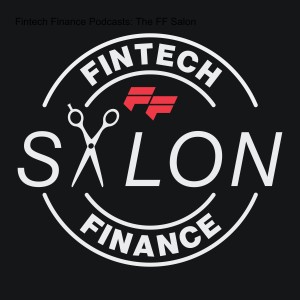
Wednesday Feb 19, 2025
Navigating the NFC Shift: A Game Changer for Digital Wallets? | G+D and Juniper Research | FF Virtual Arena #351
Does NFC technology present opportunities for financial institutions beyond Apple Pay?
Speaking to Jukka Yliuntinen from G+D Netcetera, G+D’s digital powerhouse division and Nick Maynard from Juniper Research, FF News’s Ali Paterson uncovers the evolving world of NFC technology and its impact on the digital wallet landscape in our latest FF Virtual Arena.
Global adoption of NFC tech has been uneven but European Commission approval and Apple’s recent move to expand NFC access for third-party wallet apps, creates a unique opportunity.
Is this shift poised to reshape the mobile wallet landscape, enabling banks to remain at the heart of consumers’ digital lives?
Tune in to the video above find out more about:
- Has the “TFL effect” boosted Britain’s use of contactless payment methods?
- Global variations in NFC implementation.
- What could Apple’s NFC opening mean for financial institutions?
- What can they do to drive customer adoption?
NFC Adoption Around The World
In this video we have the ideal selection of guests. On the one hand there is Jukka Yliuntinen, who is Head of Digital Solutions at G+D’s Digital Powerhouse, G+D Netcetera, and on the other, providing an insight into the landscape, we have Nick Maynard, VP of Fintech Market Research at Juniper Research. Together, they explore the current state and future of NFC (Near Field Communication) technology, particularly in the realm of digital payments and its impact on the wallet landscape.
Kicking off the discussion, Maynard emphasizes the link between existing card infrastructure and NFC adoption. According to him NFC-based contactless payments have thrived in regions where card usage is already prevalent, like the US and the UK. Paterson prompts the possibility that there has been a “TFL effect” in London, where widespread use of contactless cards on public transport normalized the “tap-to-pay” behavior. Conversely, in markets where cash remains dominant, such as Germany and Austria, NFC adoption has been slower. Maynard also notes the rise of “tap-to-phone” technology, which lowers the barrier to entry for merchants by eliminating the need for dedicated terminals. He attributes the varying levels of NFC success to cost factors, with established card infrastructure making contactless payments relatively inexpensive to implement.
The Apple NFC dominance
Yliuntinen adds to this perspective by focusing on Apple’s recent decision to open its NFC interface for third-party wallet apps on iPhones, following European Commission approval. This move is potentially huge, allowing third parties, including banks, to develop NFC-based solutions comparable to Apple Pay, albeit with some limitations. Users in the European Economic Area with iOS 17.4 or later can now execute NFC transactions directly through compatible iOS apps, powered by Host Card Emulation (HCE). Further updates will allow developers around the world to leverage the Secure Element for NFC transactions from within their apps. Discussing the global variations in NFC capabilities, Yliuntinen highlights the difference between the European market, where use cases are accessible free of charge, and other regions, where fees are as yet undisclosed.
We also get discussion about the competitive landscape, and whether Apple’s dominance in the NFC space is insurmountable. The strength of Apple’s ecosystem, brand loyalty, and user experience can’t be denied. Yliuntinen points out that Apple Pay users are generally satisfied and that the platform is deeply integrated into the iOS ecosystem. One study found that 90% of users report being satisfied with their Apple Pay experience. That is significant!
But he also emphasises the potential for banks and other players to leverage their existing customer relationships and offer integrated services, such as loyalty programs and digital identity solutions, as a way to compete. He suggests that banks need to define their broader mobile strategy and position NFC-enabled payments within that context.
Future of NFC’s
Simply replicating the Apple Pay experience is not a viable strategy, Maynard agrees. He believes that banks and issuers should focus on offering value-added services, such as loyalty programs, rewards, cashback, and integrated identity services. A hybrid approach, where banks continue to support existing mobile payment services like Apple Pay while simultaneously developing their own solutions could be the road forward. This approach minimizes the risk of customer churn and allows banks to gradually transition users to their own platforms. There should also be a clear return to investment strategy, and banks need to consider NFC-enabled payments as part of a wider digital wallet strategy encompassing account-to-account payments, open banking, and personalized financial management.
Looking ahead to 2025, Maynard outlines several key trends to watch. He highlights the integration of NFC capabilities into existing fintech solutions and digital wallets, citing examples like Curve and PayPal. He also anticipates increased use of “tap-to-phone” technology, particularly in smaller businesses. He suggests that incentivization through loyalty programs and partner ecosystems will be a key factor in driving adoption. Finally, he points to the potential disruption of adjacent markets, such as the “buy now, pay later” sector, as these companies explore integrating NFC into their offerings. He also mentions the potential for partnerships between card issuers and other fintech companies, such as crypto exchanges, to create integrated experiences. In short, we could see a lot of experimentation and innovation ahead.
Yliuntinen makes the point that a Global SecurityTech like G+D can empower bank’s customers to tap and pay with confidence – enabled by them and backed by their trusted bank.
For more great discussions on a variety of topics within finance and fintech, head to our website.
No comments yet. Be the first to say something!